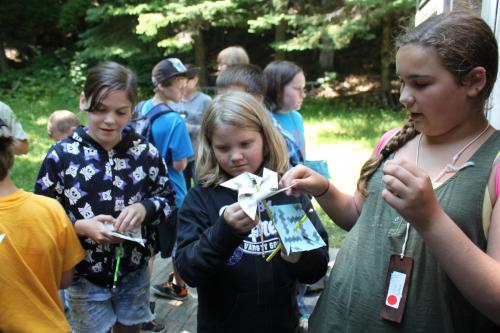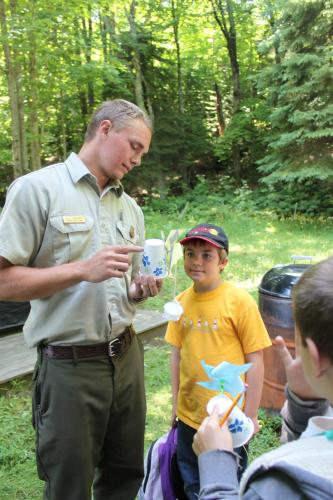Youth learn about engineering and design process
Youth learn more about the engineering and design process at Life of Lake Superior – Grand Island.
This summer youth, teen leaders and adults participated in a National 4-H wind energy engineering and design challenge, How to Lift a Load at Life of Lake Superior – G
To make the challenge more interesting, the device constraints included using blades, a shaft, pulley and string to lift the pennies. Key take-home messages included:
- The engineering and design process is a framework or process that engineers use to solve problems or challenges.
- The engineering and design process includes “going back to the drawing board” (called iterations).
- Making mistakes is an accepted part of the engineering and design process.
The following impacts were observed from the teen leaders and adult participants of the 4-H How to Lift-a-Load engineering and design challenge:
- 100 percent of teen leaders and adults indicated that they learned something new.
- 100 percent of teen leaders and adults indicated that they gained an interest in science because of the challenge.
- 87 percent of teen leaders and adults indicated that because of the challenge, they will look for more opportunities for them to be in 4-H science projects or clubs.
- 100 percent of teen leaders and adults indicated that they have a greater understanding of science resources and learning opportunities provided by MSU Extension 4-H.
- 87 percent of teen leaders and adults indicated that they plan to use 4-H as a future resource for science education.
The following impacts were observed from youth participants:
- 95 percent of youth learners indicated that they learned something new.
- 70 percent of youth learners indicated that they want to get more involved in a 4-H science project or club.
- 100 percent of youth learners agreed that the engineering and design process is a framework that engineers use to solve problems or challenges.
- 92 percent of youth learners agreed that the engineering and design process includes “going back to the drawing board,” “do-overs” or iterations, and that fixing issues is to be expected.
- 100 percent of youth learners agreed that making mistakes is an acceptable part of the engineering design process.
As with all 4-H National Youth Scie
If you are interested in holding an engineering and design challenge in your community, contact your local MSU Extension office.



 Print
Print Email
Email



